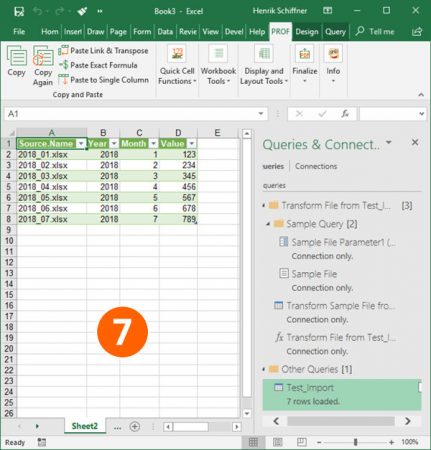Merge All Tabs into One Excel Sheet Easily

Merging multiple Excel sheets into one can be a daunting task, especially when you're dealing with vast amounts of data from various sources. However, with the right techniques and tools, you can streamline this process and make it incredibly efficient. In this detailed guide, we'll explore different methods to merge Excel tabs effortlessly, ensuring your data consolidation tasks are simplified and your work is more productive.
Why Merge Excel Tabs?

Before diving into the how-to, let’s understand why merging tabs into a single Excel sheet might be necessary:
- Improved Data Management: Consolidates data for easier analysis and reporting.
- Consistency: Ensures uniformity in data format and style across different sheets.
- Time-Saving: Reduces the time spent switching between tabs to compile data manually.
- Error Reduction: Minimizes the chances of overlooking or duplicating entries.
Method 1: Manual Consolidation

The simplest way to merge tabs is through manual copying and pasting. Here’s how:
- Create a new Excel workbook or choose an existing one where you want to merge your data.
- Select the tab you wish to transfer. Click the “Copy” button or use Ctrl + C.
- Go to the destination workbook, right-click on the desired cell where you want the data to start, and choose “Paste” or use Ctrl + V.
- Repeat for all tabs you want to merge.
📢 Note: This method can become cumbersome with multiple sheets, and might lead to errors if not performed carefully.
Method 2: Using the Consolidate Feature

Excel’s built-in Consolidate feature allows you to merge data from multiple ranges or sheets:
- Open the workbook and select the cell where you want to put the merged data.
- Go to Data > Consolidate.
- Choose a function (like Sum, Average, or Count) depending on what you need from the data.
- In the “Reference” box, select the range from one of your tabs, and click “Add”.
- Repeat for all the ranges from other tabs. Then click “OK”.
💡 Note: If you’re using functions like Sum or Average, ensure the data types are consistent across your sheets to avoid errors.
Method 3: Excel VBA Script

For those comfortable with VBA (Visual Basic for Applications), scripting can automate the merging process:
Here is a VBA script to merge all sheets:
Sub MergeAllSheets()
Dim WS As Worksheet
Dim WS_Combined As Worksheet
Dim LastRow As Long
Application.ScreenUpdating = False
' Create or reference the combined sheet
On Error Resume Next
Set WS_Combined = ThisWorkbook.Worksheets("Combined")
On Error GoTo 0
If WS_Combined Is Nothing Then
Set WS_Combined = ThisWorkbook.Worksheets.Add
WS_Combined.Name = "Combined"
End If
' Clear the combined sheet
WS_Combined.Cells.Clear
' Loop through each worksheet
For Each WS In ThisWorkbook.Worksheets
If WS.Name <> "Combined" Then
WS.Range("A1").CurrentRegion.Copy WS_Combined.Range("A" & Rows.Count).End(xlUp).Offset(1)
End If
Next WS
Application.ScreenUpdating = True
MsgBox "All sheets have been merged into the 'Combined' sheet."
End Sub
🐛 Note: This script assumes that your data starts from A1 in each sheet and copies all data from the range A1 to the last used cell in each sheet.
Using Third-Party Tools or Add-ins

There are several tools and add-ins available for Excel that can automate the merging process:
- Power Query: Part of Excel since the 2016 version, Power Query allows you to consolidate data from multiple sheets or workbooks with a more visual interface.
- Excel PowerPivot: If you need to merge data from external sources, PowerPivot is a powerful tool for data modeling.
- Third-Party Software: Tools like Ablebits, Kutools for Excel, or XLSTAT can provide more functionalities tailored to specific needs.
| Tool | Features | Cost |
|---|---|---|
| Power Query | Data connection, transformation, and loading capabilities within Excel | Free with Excel 2016+ |
| PowerPivot | Data modeling and data analysis expressions (DAX) | Free with Excel 2016+ |
| Ablebits | Various Excel add-ins for data manipulation and merge | Paid Subscription |

Conclusion

Merging multiple Excel tabs into one comprehensive sheet can significantly enhance your workflow, whether you’re consolidating financial data, compiling reports, or analyzing customer information. Each method discussed offers different levels of automation and ease, tailored to various levels of technical expertise. For simple, occasional use, the manual method might suffice. However, for more regular and complex data management tasks, leveraging Excel’s consolidate feature or third-party tools can save time and reduce the risk of errors. By understanding these methods, you’re now equipped to handle almost any Excel merging task with efficiency and confidence.
Can I merge Excel tabs without affecting the data?

+
Yes, you can use the consolidate feature or VBA scripting to merge data into a new sheet without altering the original sheets.
How do I merge data from sheets with different structures?

+
Use Power Query to transform and align data from different structures before merging them. Alternatively, you might manually adjust headers or use conditional formatting to manage discrepancies.
What’s the most efficient way to merge large datasets?

+
For large datasets, automation through VBA or tools like Power Query or PowerPivot is most efficient, as manual methods can become time-consuming and error-prone.